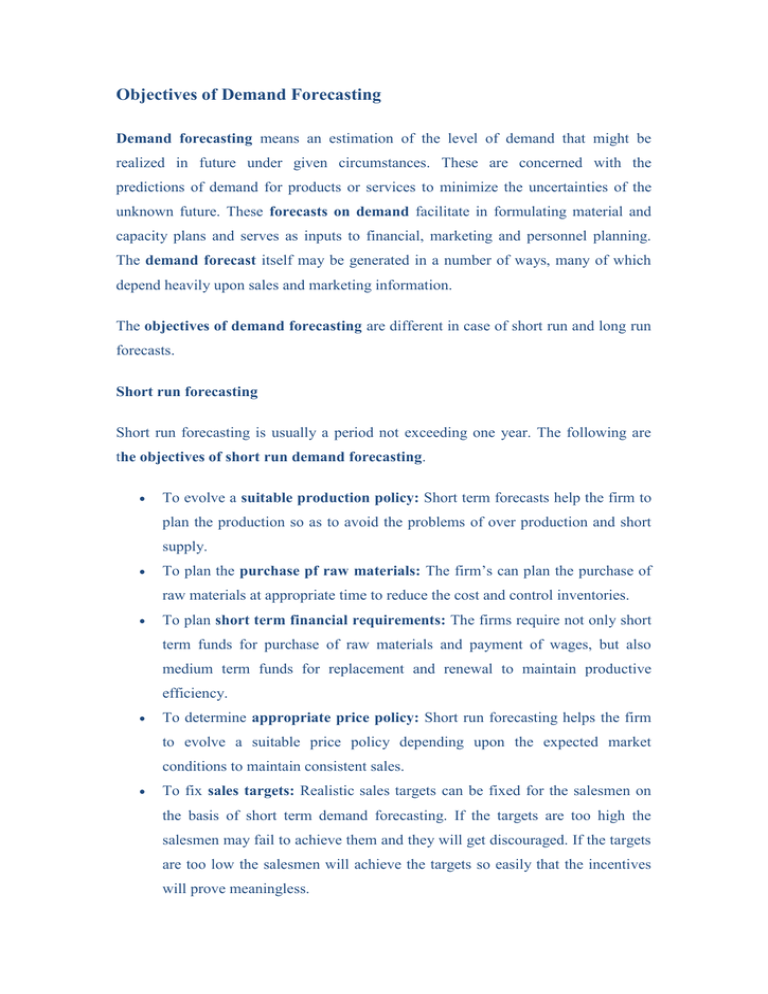Objectives of Demand Forecasting
advertisement

Objectives of Demand Forecasting Demand forecasting means an estimation of the level of demand that might be realized in future under given circumstances. These are concerned with the predictions of demand for products or services to minimize the uncertainties of the unknown future. These forecasts on demand facilitate in formulating material and capacity plans and serves as inputs to financial, marketing and personnel planning. The demand forecast itself may be generated in a number of ways, many of which depend heavily upon sales and marketing information. The objectives of demand forecasting are different in case of short run and long run forecasts. Short run forecasting Short run forecasting is usually a period not exceeding one year. The following are the objectives of short run demand forecasting. To evolve a suitable production policy: Short term forecasts help the firm to plan the production so as to avoid the problems of over production and short supply. To plan the purchase pf raw materials: The firm’s can plan the purchase of raw materials at appropriate time to reduce the cost and control inventories. To plan short term financial requirements: The firms require not only short term funds for purchase of raw materials and payment of wages, but also medium term funds for replacement and renewal to maintain productive efficiency. To determine appropriate price policy: Short run forecasting helps the firm to evolve a suitable price policy depending upon the expected market conditions to maintain consistent sales. To fix sales targets: Realistic sales targets can be fixed for the salesmen on the basis of short term demand forecasting. If the targets are too high the salesmen may fail to achieve them and they will get discouraged. If the targets are too low the salesmen will achieve the targets so easily that the incentives will prove meaningless. Long run forecasting Long run forecasting is generally for a period exceeding 3 years. The following are the objectives of long run demand forecasting. To plan the establishment of a new unit or expansion of an existing unit: Planning of a new unit or expansion of an existing unit requires an analysis of the long term demand potential of the products. The competitive strength of the firm will be greater if it has better knowledge than the rivals of the growth trends in the economy. To plan long term financial requirements: Long run forecasts are essential to assess long term financial requirements. When the funds required for expansion, modernization and diversification are large, it takes time to make necessary arrangements for raising sufficient resources through long term loans and the issue of shares and debentures. To plan manpower requirements: Long term demand forecasting is useful for manpower planning. Training and personnel development can be started well in advance on the basis of estimates of manpower requirements assessed according to long term demand forecasts. Credit: Managerial Economics-MGU MBA- Knowledge Base







